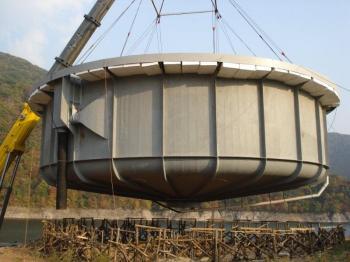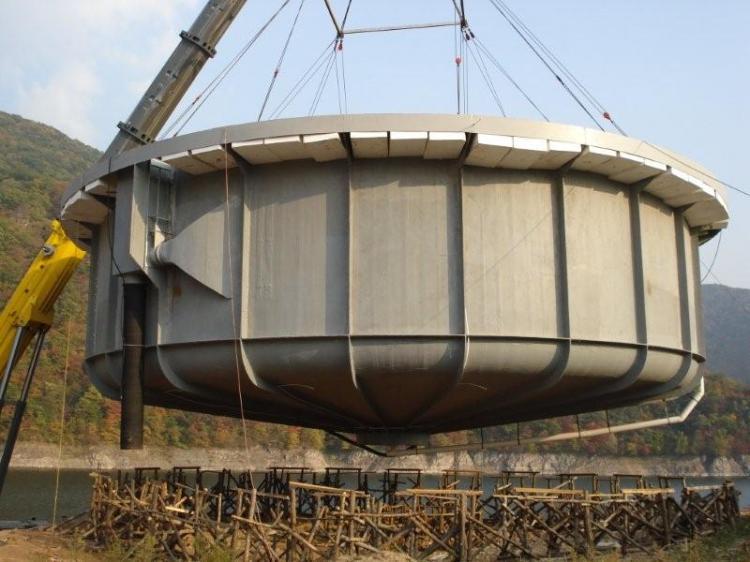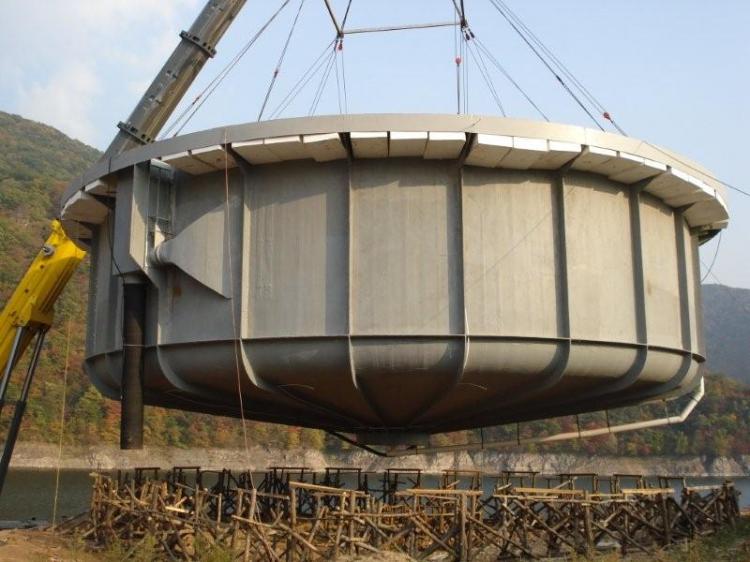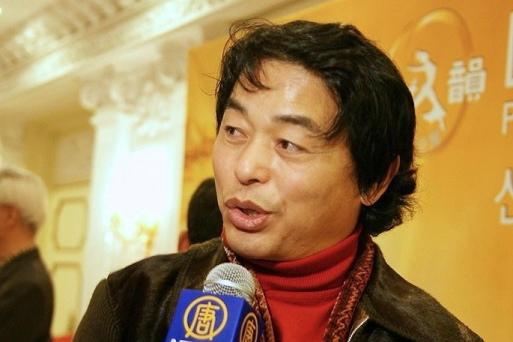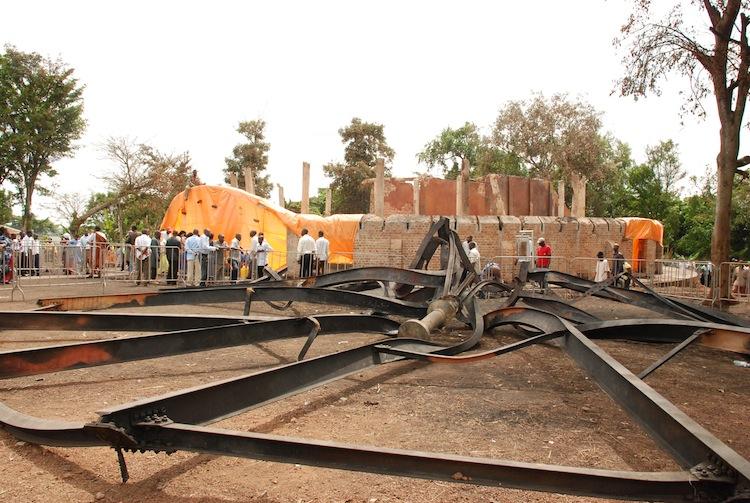VANCOUVER—B.C. technology and the research of a Vancouver-based marine microbiologist are behind the launching of the world’s first commercial fish tank farm in China.
AgriMarine Holdings Inc., a Vancouver-based fish farm company, has developed a floating, solid wall closed-containment system that, unlike conventional fish farms, is completely closed off from its surrounding environment.
Floating in a reservoir near Benxi city in Liaoning province, AgriMarine’s 24-metre diameter tank contains three million litres of circulating water stocked with 50,000 juvenile steelhead trout.
“It’s a totally Canadian-owned operation,” says Larry Albright, a member of AgriMarine’s board of directors who helped develop the company’s waste management, feed, and life support systems.
Albright is co-owner of a closed-containment fish farm in Langley, British Columbia, that rears fish in fresh water. His work on the land-based project helped inspire the AgriMarine floating system.
Closed-containment means the fish never have contact with ocean water while being reared. This prevents the myriad of problems inherent in open-net pens fish farms—disease transfer, sea lice, fish escapes, and fish waste—which environmentalists say are a threat to wild salmon and the surrounding habitat.
After 40,000 Atlantic salmon escaped a few weeks ago from a B.C.-based open ocean fish farm, conservationists renewed their call on the federal and provincial governments to force fish farms to switch from open-net pens to closed-containment systems in coastal waters.
“We’ve got to separate the wild fish from the farmed fish as much as possible, clean-up, make sure we don’t affect the aquatic environment, and culture healthy fish,” Albright says.
In Canada, AgriMarine will soon launch a closed-containment commercial fish farm that will float in Campbell River’s Middle Bay in B.C. The farm will have four tanks and will raise Chinook salmon.
“The small tanks are 75 feet across and they’re going to be holding 60,000 Chinook. Over an 18 month cycle we hope to get five pounds each and a total of 300,000 pounds. The two large tanks will hold 100,000 Chinook at five pounds each and a total of 500,000 pounds,” Albright says.
The large tanks can be used in both fresh water and sea water. The waste that settles on the bottom of the tanks is pumped to shore and can be recycled as fertilizer, he says, adding that the system is “really very gentle on the environment.”
All Pacific salmon, including sockeye, Coho, Chinook, Chum, and pinks can be cultured throughout their entire lifecycle in fresh water, says Albright, who has had years of experience raising trout and salmon in fresh-water fish farms.
Over the next year, Albright will help the Benxi operation to grow the farmed trout to two to three kilograms in size, at which point they will be harvested and sold commercially in China and surrounding countries.
“The project in China was developed first because of lower capital costs and fewer regulatory hurdles than in Canada,” he says.
As for using antibiotics to keep the fish disease free, Albright hopes it won’t be necessary, but time will tell.
“We’re going to find out. Talk to me in a year from now and I'll tell you, but we think it can be done without antibiotics. We think that we can culture healthy fish, because we maintain the environment much more ideally than net-pens, with oxygen and water of the right temperature.”
AgriMarine Holdings Inc., a Vancouver-based fish farm company, has developed a floating, solid wall closed-containment system that, unlike conventional fish farms, is completely closed off from its surrounding environment.
Floating in a reservoir near Benxi city in Liaoning province, AgriMarine’s 24-metre diameter tank contains three million litres of circulating water stocked with 50,000 juvenile steelhead trout.
“It’s a totally Canadian-owned operation,” says Larry Albright, a member of AgriMarine’s board of directors who helped develop the company’s waste management, feed, and life support systems.
Albright is co-owner of a closed-containment fish farm in Langley, British Columbia, that rears fish in fresh water. His work on the land-based project helped inspire the AgriMarine floating system.
Closed-containment means the fish never have contact with ocean water while being reared. This prevents the myriad of problems inherent in open-net pens fish farms—disease transfer, sea lice, fish escapes, and fish waste—which environmentalists say are a threat to wild salmon and the surrounding habitat.
After 40,000 Atlantic salmon escaped a few weeks ago from a B.C.-based open ocean fish farm, conservationists renewed their call on the federal and provincial governments to force fish farms to switch from open-net pens to closed-containment systems in coastal waters.
“We’ve got to separate the wild fish from the farmed fish as much as possible, clean-up, make sure we don’t affect the aquatic environment, and culture healthy fish,” Albright says.
In Canada, AgriMarine will soon launch a closed-containment commercial fish farm that will float in Campbell River’s Middle Bay in B.C. The farm will have four tanks and will raise Chinook salmon.
“The small tanks are 75 feet across and they’re going to be holding 60,000 Chinook. Over an 18 month cycle we hope to get five pounds each and a total of 300,000 pounds. The two large tanks will hold 100,000 Chinook at five pounds each and a total of 500,000 pounds,” Albright says.
The large tanks can be used in both fresh water and sea water. The waste that settles on the bottom of the tanks is pumped to shore and can be recycled as fertilizer, he says, adding that the system is “really very gentle on the environment.”
All Pacific salmon, including sockeye, Coho, Chinook, Chum, and pinks can be cultured throughout their entire lifecycle in fresh water, says Albright, who has had years of experience raising trout and salmon in fresh-water fish farms.
Over the next year, Albright will help the Benxi operation to grow the farmed trout to two to three kilograms in size, at which point they will be harvested and sold commercially in China and surrounding countries.
“The project in China was developed first because of lower capital costs and fewer regulatory hurdles than in Canada,” he says.
As for using antibiotics to keep the fish disease free, Albright hopes it won’t be necessary, but time will tell.
“We’re going to find out. Talk to me in a year from now and I'll tell you, but we think it can be done without antibiotics. We think that we can culture healthy fish, because we maintain the environment much more ideally than net-pens, with oxygen and water of the right temperature.”
